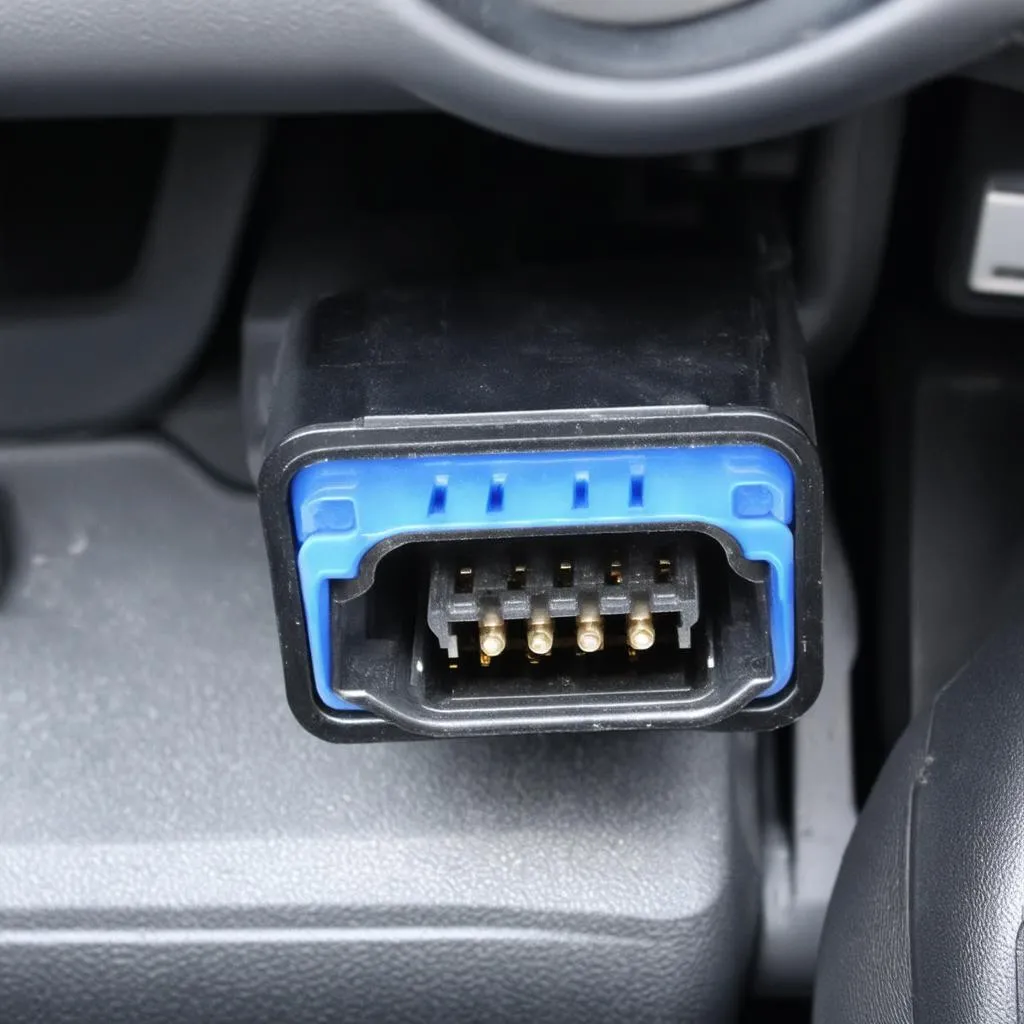Have you ever been driving your trusty 1995 Honda Civic and suddenly a mysterious light on your dashboard decides to take center stage? You know, the one that looks like a miniature engine with a cryptic “Check Engine” message? That, my friend, is your car’s way of telling you something’s not quite right. It’s whispering (or maybe yelling) that you need to check the OBD1 codes.
“OBD1 codes? What in the name of internal combustion is that?” you might be wondering. Well, fret not, intrepid Civic owner. We’re diving deep into the world of OBD1 codes, specifically for your 1995 Honda Civic, to help you decipher what your car is trying to tell you.
Understanding the Language of Your 1995 Honda Civic
Before we grab our metaphorical wrench and delve into the nitty-gritty of checking those codes, let’s understand why they exist in the first place. Think of OBD1 (On-Board Diagnostics 1) as your car’s rudimentary communication system. It’s not as sophisticated as the OBD2 systems found in later models, but it gets the job done.
Back in 1995, Honda, along with other manufacturers, started incorporating these early diagnostic systems into their vehicles. They were designed to monitor specific components related to emissions control. So, when that “Check Engine” light throws a tantrum, it often means your Civic’s emissions system needs a little attention.
How to Check OBD1 Codes on Your 1995 Honda Civic
Now, the million-dollar question: How do you check these enigmatic OBD1 codes on your 1995 Honda Civic? Unlike the plug-and-play convenience of OBD2 scanners, deciphering OBD1 codes requires a bit more finesse.
-
Locate the Service Connector: In your 1995 Civic, the service connector, often referred to as the “2-pin connector,” is typically found under the passenger side of the dash.
-
Grab a Jumper Wire: You’ll need a simple jumper wire to connect the two pins on the service connector.
-
Turn the Ignition On: Turn the ignition to the “ON” position but don’t start the engine.
-
Connect the Jumper Wire: With the ignition on, connect the two pins on the service connector using your jumper wire. This action instructs the car’s computer to enter diagnostic mode.
-
Observe the “Check Engine” Light: Keep an eye on the “Check Engine” light. It will start flashing a series of long and short blinks. These blinks represent the OBD1 codes stored in your car’s computer.
-
Decode the Blinks: Now, for the fun part – deciphering the code! You’ll need a guide to translate the sequence of blinks into specific trouble codes. These codes will point you in the right direction for troubleshooting.
 OBD1 Service Connector Location
OBD1 Service Connector Location
Common OBD1 Codes on a 1995 Honda Civic and Their Meanings
Here are a few common OBD1 codes you might encounter on your 1995 Honda Civic:
- Code 1: Oxygen sensor circuit
- Code 3: Manifold Absolute Pressure (MAP) sensor circuit
- Code 7: Engine Coolant Temperature (ECT) sensor circuit
- Code 10: Intake Air Temperature (IAT) sensor circuit
Remember: This is not an exhaustive list. There are many other OBD1 codes, and their meanings can vary slightly depending on the specific engine and emissions system in your 1995 Civic.
Seeking Expert Help
Feeling a bit overwhelmed? Don’t fret! Decoding OBD1 codes can be a bit like learning a secret language. If you’re unsure about interpreting the codes or prefer the guidance of a seasoned professional, don’t hesitate to reach out.
Contact us on WhatsApp at +84767531508 for assistance with your 1995 Honda Civic or any other vehicle diagnostic needs. Our team of expert technicians is available 24/7 to provide support and get you back on the road with confidence.
 Mechanic Using OBD1 Code Reader
Mechanic Using OBD1 Code Reader
Embracing the Quirks of Your Classic Civic
While the OBD1 system might seem a bit archaic compared to today’s technology, it reflects the ingenuity of its time. By understanding how to interpret these codes, you’re not only troubleshooting your car but also connecting with its history.
Remember, maintaining your 1995 Honda Civic is an ongoing journey. Regular checkups, prompt attention to warning lights, and a little bit of knowledge will keep your classic ride running smoothly for miles to come.
For further insights into maintaining your Honda Civic or other vehicles, explore our wealth of resources on techcarusa.com:
- Understanding OBD Codes on a 2004 Honda CR-V
- Decoding OBD Codes P1491 on a 2003 Honda Civic Hybrid
- Common OBD Codes on a 2004 Honda Civic
- OBD Diagnostics and the EDL System
- Troubleshooting OBD Codes on a 2002 Honda Civic
Keep those engines purring!